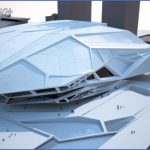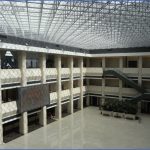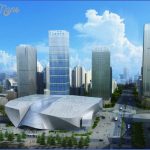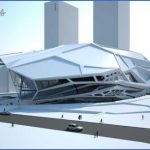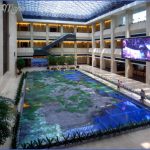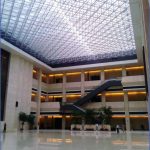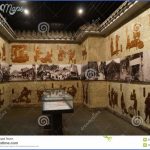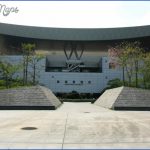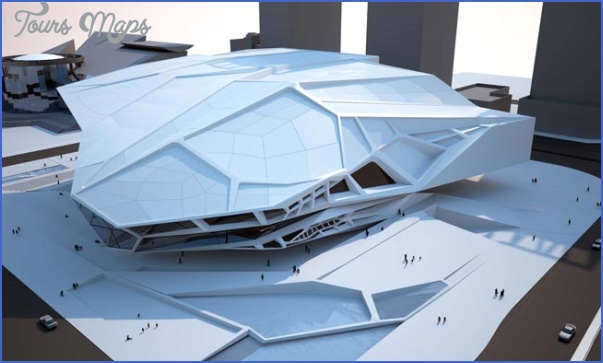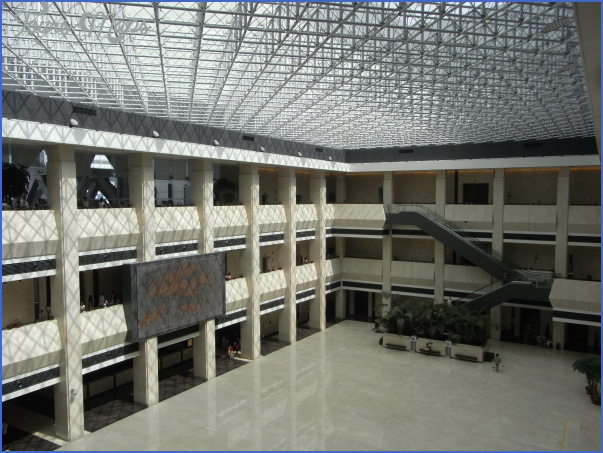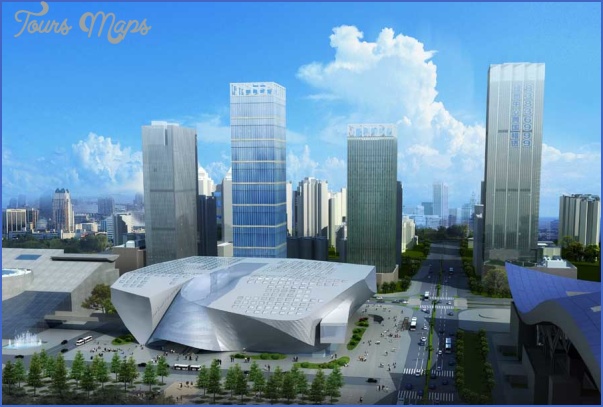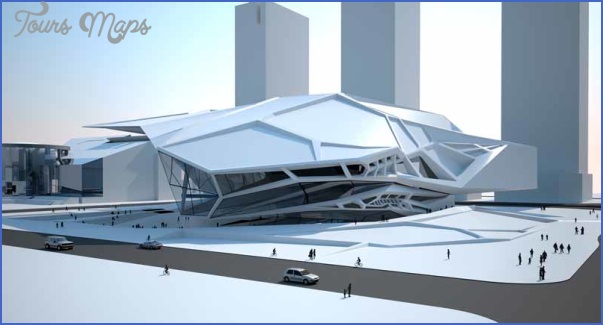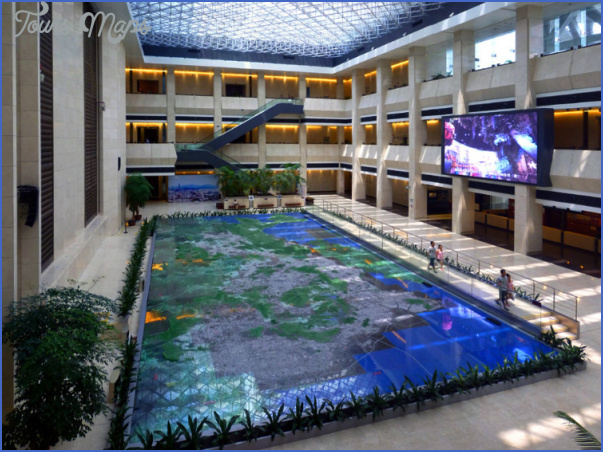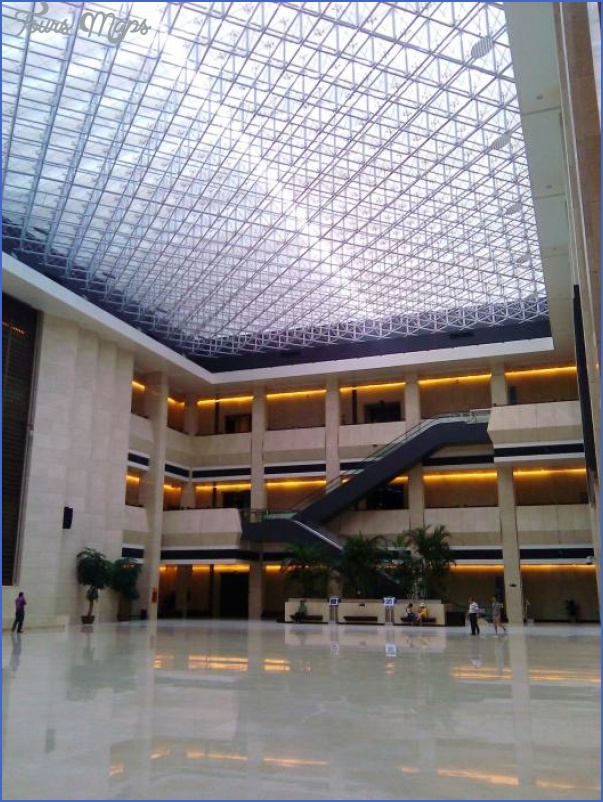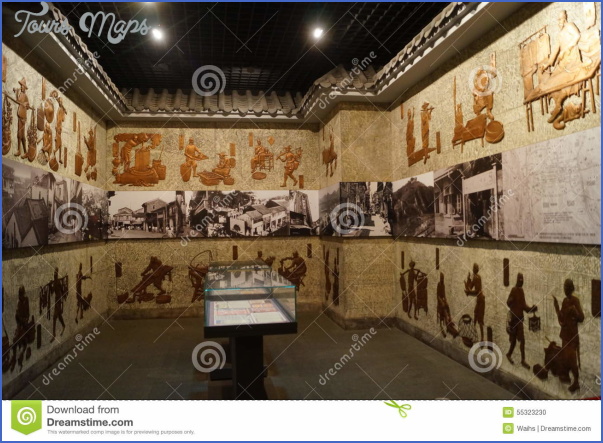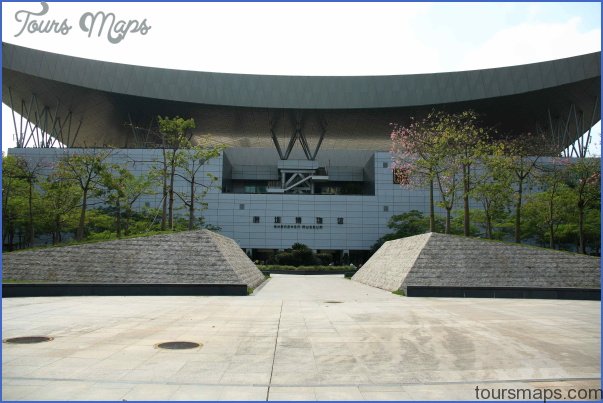The old Shenzhen Museum was dingy, dusty and unimaginative and heavily politicised. So it was with some interest that we looked forward to the opening of the new museum and on the day after Christmas 2008 we were lined up with the best of them.
Waiting.
The website said 9 a.m. but……..it was 10 a.m…. we’ve become philosophical about such things; so, we sat with our books and watched the crowds grow. And grow.
By ten o’clock we were lined up, ten deep. The museum occupies most of the eastern wing of the Shenzhen Civic Centre and we were fully conversant with the spectacular nature of that architecture, but it was still a shock when we finally entered the museum. It still looked a bit like the old one, three floors of exhibits arranged around a large atrium. The atrium in the new museum was roofed with translucent glass and appeared to go on forever, infinite.
We quickly oriented. Unlike the old museum, English commentary accompanies the displays. For convenience you can even get an English taped commentary from the front desk. Do so. It’s worth it. The previous museum was neither fish nor fowl and even deteriorated into stuffed animals at one point. The new one knows exactly what it’s about. It’s a museum of Shenzhen history.
The top floor is dedicated to the history of Shenzhen in Reform and Opening. Remember, for much of its short history, Shenzhen followed policies that were strongly opposed by powerful forces in the central government. To protect itself, it dubbed the policies experiments and paid lip-service to political orthodoxy. Now, more than thirty years since the beginning of Reform and Opening, this pretence has disappeared and the tone is triumphal.
The best way of appreciating this is to spend a little time in the small gallery that acts as an antechamber to the main exhibition hall on the third floor. This shows Shenzhen before Reform. It presents an idyllic scene of people sitting under a large banyan tree. And there were banyan trees aplenty around Shenzhen Railway Station in the old days. But to make the picture really authentic you’d have to have removed all the men as the exhibit points out, they had escaped to Hong Kong. Then you would have to add in liberal doses of malnutrition, poverty and repression. The small print reveals the real targets of the exhibit. The exhibits are poverty and oppression exhibits; ration coupons, ID cards that classified their owners on the basis of their political class, Mao quote books, pictures of struggle meetings etc. Nobody actually says in so many words that it was wrong and unworkable, but you’re warmly invited to draw your own conclusions. There is an exhibit of Deng Xiaoping dealing with the problem of defection to Hong Kong. Deng says that it can’t be solved by military means because the problem is with the government’s policies what a sensible man.
In the main hall all political gloves are off. Much is made of things such as the labour market, the Stock Exchange, free markets in land and other things whose espousal forty years ago would have possibly meant death. There are a lot of official documents, some of which can be fascinating to the cognoscenti. But there’s also plenty of light and action. Particularly impressive are several BIG models of the city, which you can walk over on glass.
The second floor goes into the earlier history of Shenzhen. What really struck us was the number of archaeological discoveries in the city going back as far as seven thousand years. This is hardly surprising given the enormous amount of construction and therefore digging that has gone on in the past thirty years. But we didn’t know that so much time had been added to busy construction schedules to examine and explore these incidental archaeological discoveries. Additional emphasis is focused on the origins of the early inhabitants of the city including details about the the origins of the Cantonese. Chinese genealogy makes the average western ancestral searcher’s work look wimpy. An averagely good searcher can go back fifty generations: in the Shenzhen section of the Museum you can appreciate the depth of Chinese relations over time.
The ground floor is set aside for special exhibitions. At the time of our visit this was a special exhibition that demonstrated the political importance of Reform, and of Shenzhen in modern China. The Central Government thought so much of Shenzhen’s role in the making of modern China that to celebrate thirty years of Reform and the opening of the museum; it made available some of China’s greatest art treasures for a special exhibition.
Pretty quickly we understood why everybody had been lined up ten deep at the door and why we had to queue for so long to get into this exhibition. They were all there: several terra cotta warriors, a full jade burial suit, Bronze Age pottery from Banpo near Xi’an, Song Dynasty celadon ceramics and row after row of Tang tricolour glazed wares. We joined everybody else in being gobsmacked. Flashes went off everywhere. Clearly we had misread the signs. They must have said No Photography if you don’t have a Camera. Right! We noted our mistake and participated.
Address: Shenzhen Civic Centre East Building 0755 8210-1044
Metro: Shi Min Zhong Xin on lines 2 and 4.
Buses Nos. 105, 234, 236, 41, 371, 107, 10 to the north of the building and Nos. 38, 235 and 15 to the west.
Website: http://www.shenzhenparty.com/places/culture/museums/shenzhen-history-museum-new
SHENZHEN MUSEUM Photo Gallery
Maybe You Like Them Too
- The Best Cities To Visit in The World
- World’s 10 Best Places To Visit
- Coolest Countries in the World to Visit
- Travel to Santorini, Greece
- Map of Barbados – Holiday in Barbados

